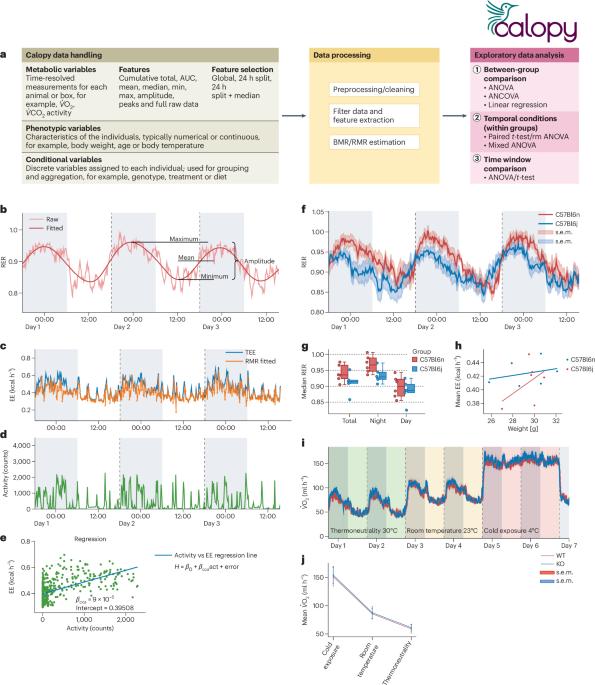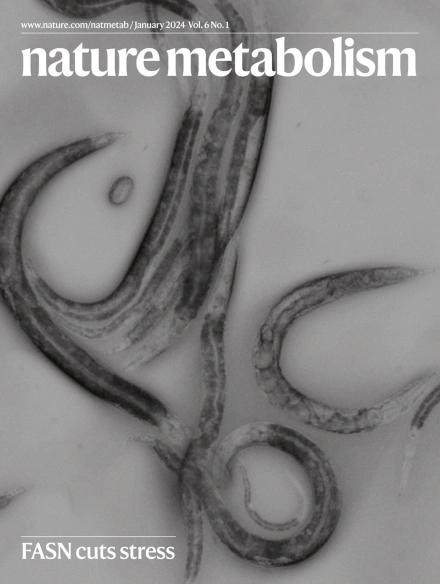一个先进的框架,用于集成和分析间接量热数据
IF 20.8
1区 医学
Q1 ENDOCRINOLOGY & METABOLISM
引用次数: 0
摘要
这里我们介绍Calopy,一个创新的软件套件,用于直观和全面的间接量热数据分析。Calopy是一个基于web的开源Python应用程序,可以在线或本地访问;它是独立于平台的,可通过任何网页浏览器访问https://www.calopy.app.Indirect。量热法是一种广泛使用的技术,用于测量人类和动物的能量代谢1。间接量热法的核心是跟踪氧气消耗\((\dot{V}{\mathrm{O}}_{2})\)和二氧化碳产生\((\dot{V}{\mathrm{CO}}_{2})\),通过能量消耗和静息代谢率(RMR)2或呼吸交换率(RER)等参数分析能量代谢,这是底物利用的关键指标3。在动物的综合间接量热系统中,还可以以高时间分辨率测量其他相关代谢参数,如运动活动、食物和水的摄入量以及体温,以及笼子温度、照明和湿度等环境因素。连续或分类表型变量,如体重,基因型和治疗,也被记录。值得注意的是,间接量热数据可能进一步受到相互依赖的因素的影响,如昼夜节律、食物摄入、环境条件和数据噪声,这进一步增加了复杂性4。总之,这些数据形成了一组复杂的时间分辨、连续和分类变量,需要复杂的统计和分析方法。本文章由计算机程序翻译,如有差异,请以英文原文为准。


Calopy — an advanced framework for the integration and analysis of indirect calorimetry data
求助全文
通过发布文献求助,成功后即可免费获取论文全文。
去求助
来源期刊

Nature metabolism
ENDOCRINOLOGY & METABOLISM-
CiteScore
27.50
自引率
2.40%
发文量
170
期刊介绍:
Nature Metabolism is a peer-reviewed scientific journal that covers a broad range of topics in metabolism research. It aims to advance the understanding of metabolic and homeostatic processes at a cellular and physiological level. The journal publishes research from various fields, including fundamental cell biology, basic biomedical and translational research, and integrative physiology. It focuses on how cellular metabolism affects cellular function, the physiology and homeostasis of organs and tissues, and the regulation of organismal energy homeostasis. It also investigates the molecular pathophysiology of metabolic diseases such as diabetes and obesity, as well as their treatment. Nature Metabolism follows the standards of other Nature-branded journals, with a dedicated team of professional editors, rigorous peer-review process, high standards of copy-editing and production, swift publication, and editorial independence. The journal has a high impact factor, has a certain influence in the international area, and is deeply concerned and cited by the majority of scholars.
 求助内容:
求助内容: 应助结果提醒方式:
应助结果提醒方式:


